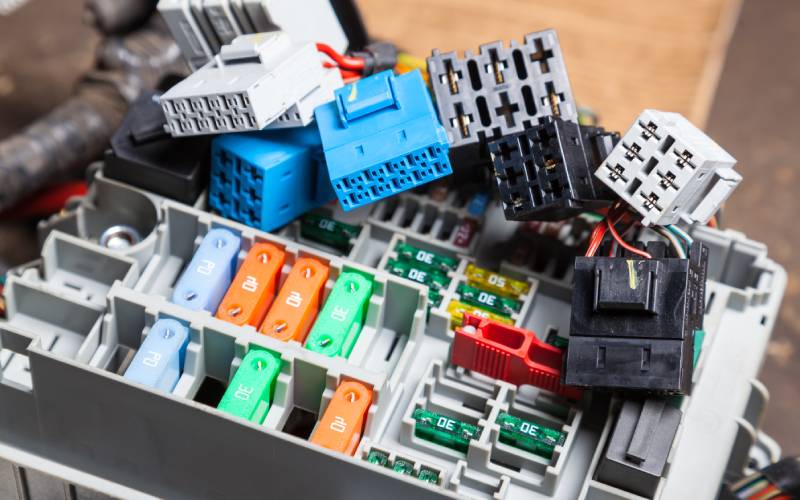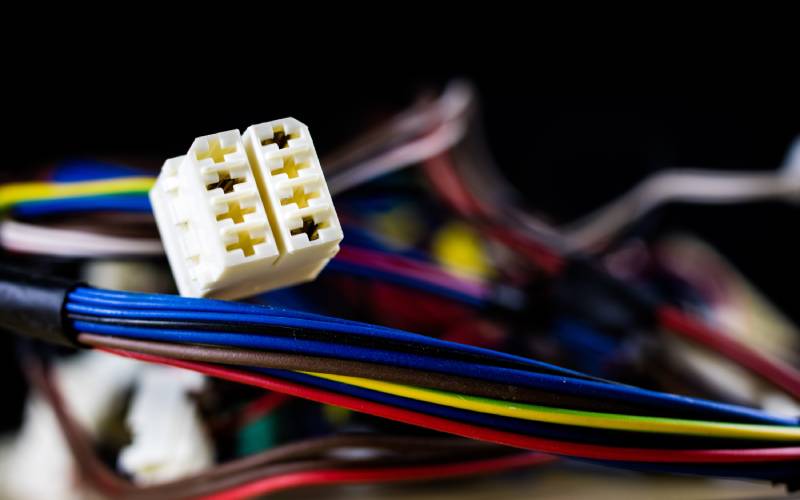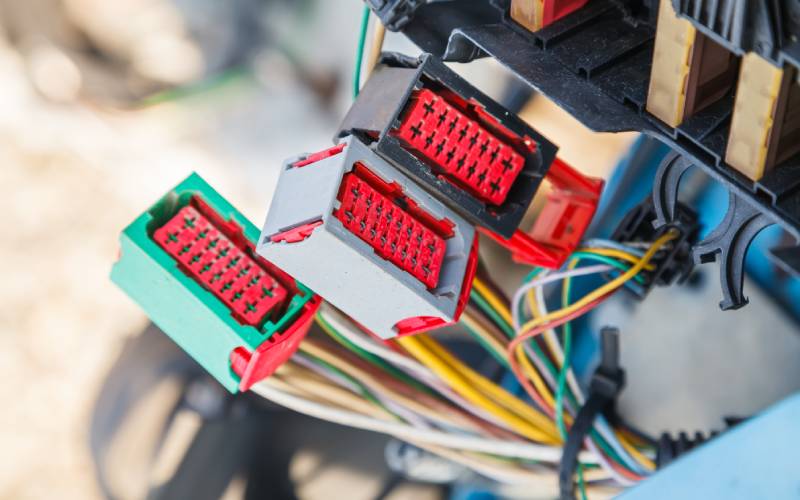The Evolution of Automotive Cavity Connectors

Every component plays a part in automotive engineering and helps us create systems that enhance the safety, efficiency, and security of modern vehicles. Among these components, automotive cavity connectors may not be the most glamorous, but they are incredibly useful when it comes to putting these systems together.
From their early stages to their current designs and several advanced features, we’ve seen many changes in connector technology over the decades. Connector Experts is here to detail the evolution of automotive cavity connectors and how innovation continues to improve upon these small but noteworthy pieces.
The Birth of Automotive Cavity Connectors
In the early days of automotive manufacturing, engineers faced the challenge of effectively connecting electrical systems within vehicles. The earliest systems relied on incredibly simplistic solutions and often used basic metal contacts with manual soldering.
These systems were hardly efficient or reliable, so experts needed to develop more practical solutions that would last longer and work better with electrical systems. Thanks to the earliest automotive connectors, we found means to streamline the connection process and develop more organized and reliable systems to pair with electrical systems.
While early connectors were simple, focusing on function over form, we could make them with inexpensive materials that provided durability and performance for a limited time. However, engineers could already tell that these models were better than previous methods and started recognizing the potential for connectors to transform automotive design.
Advancements in Materials and Design
With the growing demand for improved automotive systems, the limitations of early cavity connectors became quickly apparent. Engineers needed connectors that could withstand the harsh environments and conditions that vehicles often encounter. This led to a focus on improving the materials and designs used in connector manufacturing.
Over time, we shifted away from using basic metals or plastics and aimed to utilize more advanced materials such as high-performance polymers and alloys. While these advanced materials increased production costs, they provided greater resistance to common environmental hazards and lasted a lot longer. These factors reduced the need for replacements, saving money in the long run. We started seeing more sophisticated designs as engineers started incorporating new features such as seals and locking mechanisms to secure connections.

The Role of Connectors in Vehicle Performance
Automotive cavity connectors allow electronic systems to operate seamlessly. From power distribution to data transmission, connectors are an integral part of maintaining a car’s functionality. While they may seem insignificant, even one faulty connector can result in system failure and can impact engine performance, lighting systems, and even essential safety features.
We can’t overstate the importance of vehicles having reliable and well-maintained connectors. Engineers must consider factors including current-carrying capacity and environmental resistance when designing these components. A well-designed connector can prevent electrical shorts, overheating, and other common issues that could compromise a vehicle’s performance.
Innovations in Connector Technology
The automotive industry’s push toward smarter and more efficient vehicles eventually resulted in worthwhile innovations in connector technology. Engineers are now exploring advanced features like self-diagnosis, which allows connectors to monitor their own performance and alert users to potential issues. By taking a more proactive approach toward connector features, engineers can create connectors that enable our vehicles to identify and address problems before they turn into major system failures.
Another area of innovation is the integration of connectors with other vehicle components. By embedding sensors and microchips into connectors, engineers can create more intelligent systems that facilitate real-time data collection and analysis. This capability is particularly valuable for modern vehicles that rely on extensive electronic networks to operate.
The Impact of Electric Vehicles on Connectors
When looking at the evolution of automotive cavity connectors, you can’t ignore the significant impact of the rise of electric vehicles (EVs). These vehicles require connectors that can handle higher voltages and currents compared to traditional internal combustion engine vehicles. Engineers realized the importance of this shift and started developing specialized connectors that could keep up with the electric vehicle market.
Modern EV connectors need to handle rapid charging and thermal management since these are common challenges of electric vehicles. Engineers work to design connectors that provide efficient power transfer while maintaining safety and reliability standards. These factors lead to unique innovations like liquid-cooling technology for connectors, which helps manage heat generated during high-power operations.
Challenges in Connector Design and Manufacturing
Despite the advancements in automotive cavity connectors, engineers still face several challenges in design and manufacturing. One major hurdle is ensuring the connectors’ durability and reliability in extreme environments. Since vehicles still face a wide range of temperatures, environmental moisture, and general vibrations, we need to prevent these hazards from negatively impacting connector performance.
To address these challenges, engineers must select materials that offer excellent resistance to environmental factors. This requires a balance between performance, cost, and manufacturability. Engineers also need to consider the ease of assembly and disassembly so that we can easily maintain or replace connectors whenever necessary.

Connector Testing and Quality Assurance
Rigorous testing and quality assurance procedures are necessary to ensure the reliability and performance of automotive cavity connectors. Engineers must conduct various tests, including mechanical, electrical, and environmental assessments, to evaluate connectors’ durability and functionality.
Mechanical testing assesses connectors’ ability to withstand physical stress, such as vibrations and impacts. Electrical testing evaluates their performance under different voltage and current conditions, ensuring safe and efficient power transmission. Environmental testing exposes connectors to extreme temperatures, humidity, and corrosive substances to verify their resilience.
The Future of Automotive Cavity Connectors
The future of automotive cavity connectors looks promising, with continued advancements on the horizon. Engineers are exploring new materials, such as conductive polymers and carbon composites, that offer even greater performance benefits. These materials could lead to lighter and more durable connectors, enhancing vehicle efficiency.
We’re also likely to see further advancements in smart connector technology as vehicle technology continues to advance. This includes features like wireless communication capabilities, allowing connectors to interact with vehicle systems and external devices seamlessly. These innovations could revolutionize how vehicles communicate and operate, contributing to the development of fully autonomous and interconnected transportation systems.
Discover the perfect solutions for your automotive wiring needs at Connector Experts. Whether you’re upgrading your vehicle’s electrical system or ensuring reliable connections, our selection of high-quality wire harness connectors has what you need. Check out our vast online catalog to find the parts to keep your vehicle performing at its best.

You must login to post comments.